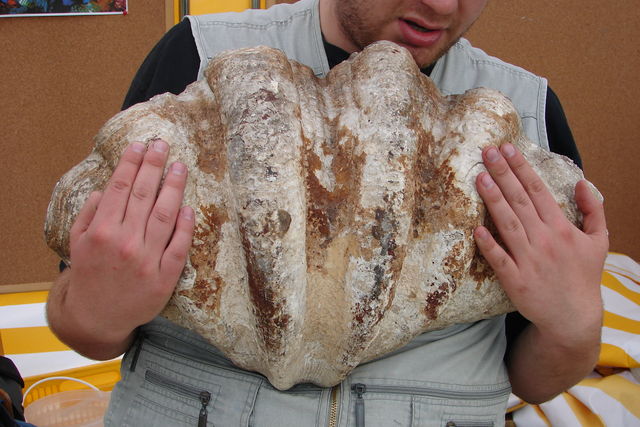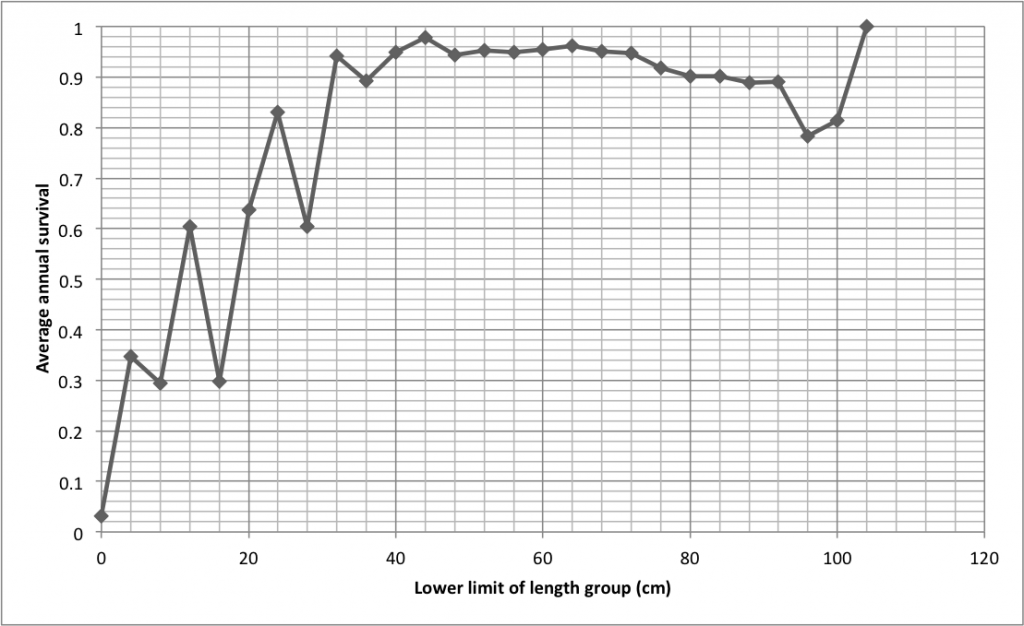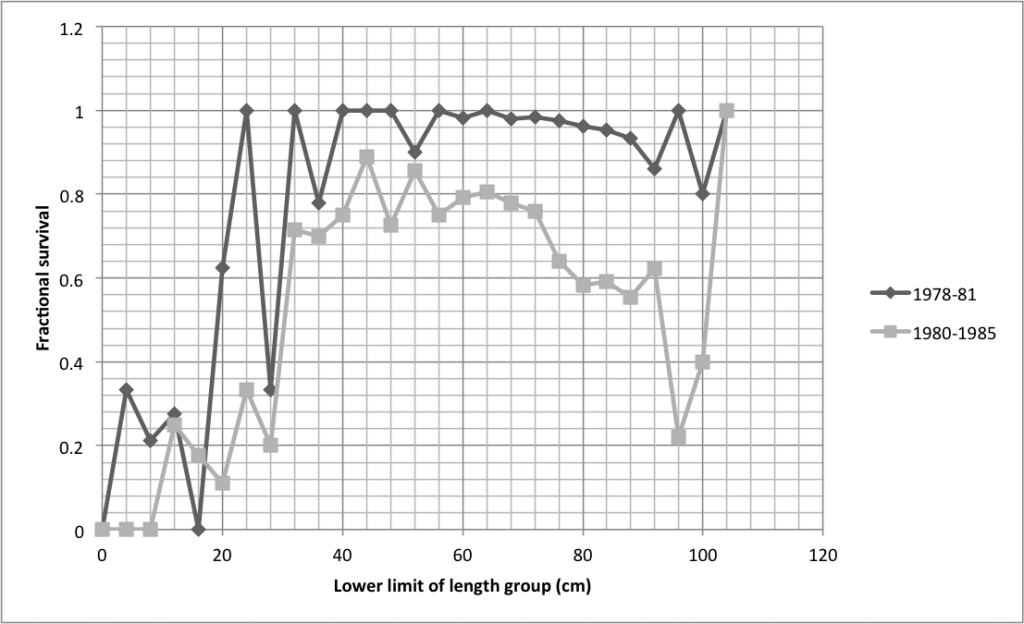
It’s a hard life being the giant clam, the ‘big kahuna’ of the Indo-Pacific region. A legend exists that every giant clam who reaches maturity must undergo a ‘rite of passage’ that will chill his mind and soul to the bone; yet, if he emerges victorious, he is granted an immunity from almost all the disease and evil on this Earth. There may be truth to this legend.

The above graph documents the a population of T. gigas in Michaelmas Reef in the Great Barrier Reef, Australia over a series of time points (years 1978, 1980, 1981, and 1985). There is a gradual incline of survival rate as the length of the giant clam increases. The survival rate seems to peak at around 40 cm. At that point, nearly all the clams seem to be able to survive. In other words, BIGGER IS BETTER.
It’s pretty easy to see why the smaller clams tend to die out. At a small size less than 30 cm, the not-so-giant juvenile clam serves as a scrumptious morsel for its fellows on the reef, as it remains yet too feeble to defend itself. However, once the clam becomes large enough, the nibbling attacks by the coral reef biodiversity on the clam become nothing but an annoyance.
Yet, even the big kahunas are not indestructible. Between the years 1980 and 1985, about 400 giant clams out of the original 1120 in the Michaelmas area simply disappeared with no apparent explanation. Their disappearance remains but a mystery. What could have caused the disappearance of 400 giant clams (potentially 50 tons of clam!) within a span of five years? Amongst those dear clams lost were not only smaller clams but larger ones as well:

So…What in the world could have taken out these giant clams? Sure, weapons of mass destruction can, but they’re under surveillance, and although giant clams are ferocious, the middle of the South Pacific ocean isn’t really a viable target of international concern. Let’s take a look at some more plausible explanations.
Reef overgrowth. It is completely possible that the clams were just alright missed. The clams, being a stationary animal, don’t attract very much attention. Indeed, they can be a little hard to spot:
Disease and environment. Giant clams are susceptible to a variety of diseases, often due to some sort of pathogenic bacteria or protozoan. Disease definitely poses a considerable threat to the life of adult giant clams. There were significant reports of clam death at nearby islands on the Great Barrier Reef attributed to an unknown unicellular organism in the 1980s, which may have caused the strange disappearance of the giant clams. Diseases in aquaria and reared Tridacna can also translate to wild Tridacna. These diseases include bleaching, which involves the loss the symobiotic zooxanthellae and pigments caused by changes in light intensity and temperature, predatory and parasitic snails, worms, and microbial problems.
Human activity. It is also possible that clams could have been taken for shells and food by recreational divers or by a clam boat. Although this was most likely not the case for the Michaelmas Reef clams (because the area isn’t easily accessible), lack of enforcement of poaching laws could heavily impact the body size of the clams. A very interest aspect of the size of mollusks (like clams and snails) is that human effects can lead to negative consequences for gastropods, usually involving a decline in average body size. One possible explanation for the change in clam survivability due to body size is size-selective collection of giant clams. In order to determine whether or not this occurs, I collected data on the size of T. gigas shells in online auctions and shell stocks and investigated if a particular size of Tridacna gigas was being taken. I hypothesized that the size of clam shells sold would, on average, be of greater size than those naturally found in the wild. My results are shown here:

Interestingly, my data indicated that the size of Tridacna gigas shells seemed to actually be smaller than those found in the wild. The explanation for this comes quite readily: the large clams usually found in the wild (>70 cm in length) are probably very old, perhaps over 50 years old. Although some of the shells available through sales are from recreational collection, I suspect that most of them were from shell importers that packaged them from giant clam farms. These farms usually mark the clams for shipment as soon as they reach a mature adult size, which looks to be somewhere around 40 cm. Therefore, these clams most likely never even get the chance to continue growing to their maximum size. Hence, we see an average shell size lower than that found in the wild.
Read more on human effects on mollusk body size:
Assessment of human impact on giant clams (Tridacna maxima) near Jeddah, Saudi Arabia (Bodoy, 1984)
Anthropogenic impacts and historical decline in body size of rocky intertidal gastropods in southern California
Read more on diseases affecting Tridacna gigas:
Bacterial disease of cultured giant clam Tridacna gigas larvae
Serious mortality in populations of giant clams on reefs surrounding Lizard Island, Great Barrier Reef
Feature Article: A Look at “Mysterious Clam Deaths”
